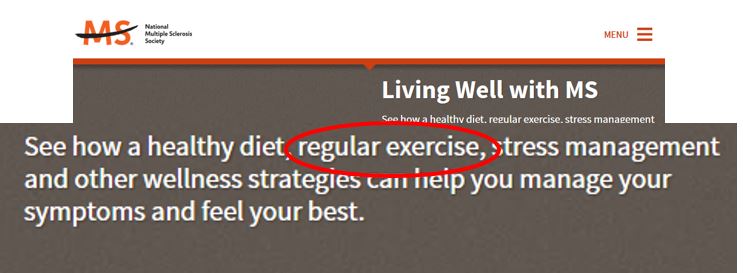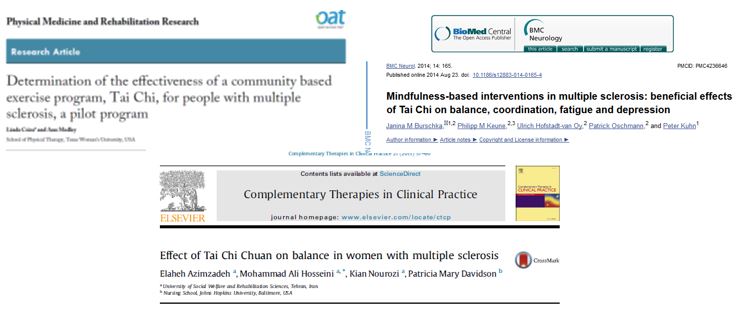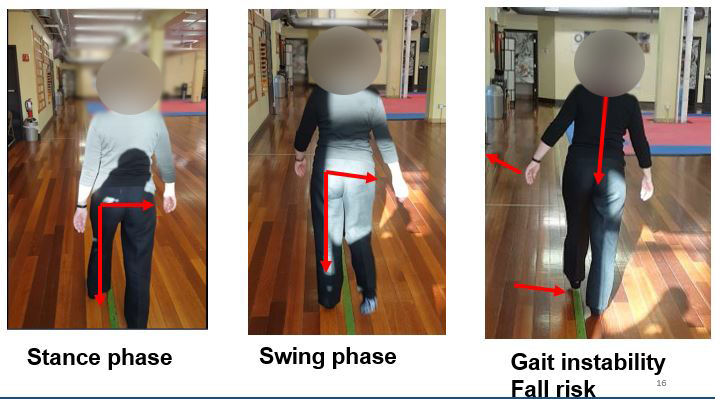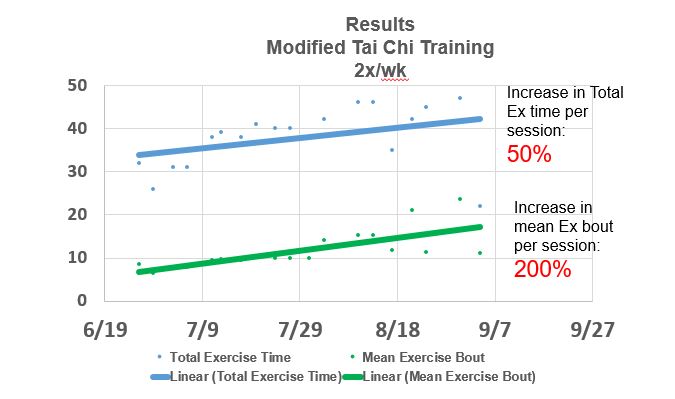As Head Instructor at Chicago Tai Chi, much of my time involves working with private clients, including those with challenging health issues.
Ample medical research has established that Tai Chi, when properly adapted, taught, and practiced, provides an immensely beneficial exercise for persons with a wide range of injuries, diseases, and chronic conditions.
This article focuses on Tai Chi and one particularly challenging chronic condition – Multiple Sclerosis (MS). I have had the privilege of working with an amazing client with MS for over a year. Our customized Tai Chi for MS Program, combined with the client’s determination, diligence, and positive outlook, have delivered promising results.
Below, I provide some background on MS, briefly discuss recent research on Tai Chi and MS, then provide a case study of our Tai Chi for MS Program and my client’s progress.
Note: The client provided consent for publishing this article. She hopes that other MS patients will discover the benefits of Tai Chi.
MS: DISEASE BACKGROUND AND CONSIDERATIONS FOR EXERCISE
A. MS Etiology and Symptoms
MS is a chronic, usually progressive, disease of the central nervous system (CNS). Because MS affects the CNS, it can impair a wide range of neurological functions, including cognition, balance, muscle strength and control, sensory reception, and emotions. Depending on severity, MS can lead to disability, functional limitations, and poor quality of life.
MS is rarely fatal, and MS patients have a similar life expectancy as the general population.
The cause of MS remains unclear. MS is considered an immune-system mediated disease, where, for unknown reasons, the body’s immune system begins to attack the CNS.
MS targets the myelin sheath, the fatty, whitish coating on the axons of many nerve cells. Myelin serves to insulate the axon, allowing a nerve impulse or action potential to transmit more quickly. As MS damages the myelin sheath, nerve signals fail to transmit properly, disrupting CNS function and perception, cognition, physical movement, and other bodily functions. Ultimately, MS can damage the underlying nerve tissue too.
Nerve damaged by MS. Image: http://www.mayoclinic.org/diseases-conditions/multiple-sclerosis/home/ovc-20131882
Because MS can damage different CNS regions, the impact of the disease is unpredictable. There is high variability of symptoms across patients and a wide range of severity and disability. Main symptoms include fatigue, weakness, vertigo, gait difficulties, spasticity, vision problems, pain, depression, bladder/bowel issues.
Several medicines are used to alleviate MS attacks, reduce relapse rates, and to slow progression of the disease. Most medicines target immune system cells or their function.
B. MS and Exercise: Recommendations and Precautions
Every leading authority on MS recommends exercise for MS patients. Because of MS symptoms, including balance and fatigue issues, low-impact exercise is the best choice. One low-impact high on most lists of MS exercises: Tai Chi.
For example, The National MS Society (NMSS) advocates regular exercise as important for managing symptoms and “living well with MS.” NMSS specifically recommends Yoga, aquatic exercise, and adaptive Tai Chi for MS patients.
Image: http://www.nationalmssociety.org/Living-Well-With-MS
The Mayo Clinic also recommends regular exercise for persons with mild to moderate MS. The Mayo Clinic suggests swimming, walking, stationary cycling, yoga, and Tai Chi as appropriate exercises.
For those of us that plan exercise programs, MS requires special considerations and precautions. When working with MS patients, the American College of Sports Medicine (ACSM) emphasizes the importance of adjusting the exercise program, each workout, and specific exercises to the condition of the patient, at the time.[1] With MS, patient condition can be highly variable, so careful observation, creativity, and compassion are important to maximize beneficial effects of exercise.
When working with MS patients, it is important to take precautions, and to adjust programming and workouts, for the following issues: (i) balance problems/instability; (ii) easily fatigued; (iii) low thermal stress tolerance; (iv) mood; and (v) variability in ability day-to-day.
MS patients can have good days and bad days. Adjusting the exercise program can help provide beneficial physical activity at a tolerable level, even on “bad days.”
C. Recent research on Tai Chi as an EX intervention for MS
Three recent studies provide promising evidence that Tai Chi can provide significant benefits for MS patients. [2–4] The studies employed Tai Chi protocols varying from 6 weeks to 6 months on MS patients.
Each of the studies concluded that Tai Chi practice resulted in significant improvements in balance. One of the studies also found Tai Chi practice significantly improved depression [3], while another found that Tai Chi practice also improved leg strength [4]. While the studies were small, they provide encouraging evidence that Tai Chi can deliver effective exercise for MS patients.
With that background, I’ll turn to the Case Study.
Case Study: A Customized Tai Chi for MS Program
A. Client Background and Disease Status
The client is a female, 43, married, and works full time in a professional position in a large firm. Her MS was diagnosed 5 years ago, after balance issues and some falls led to a neurological examination.
Main symptoms: fatigue, some difficulty ambulating, right foot drop, urinary urgency.
Main quality of life issues: fatigue, instability while walking.
She continues to work full time, but moves more slowly, and can become exhausted by the end of the day.
B. Initial assessment
I began to work with the client and her husband in the Spring of 2016. Over the course of multiple sessions, I assessed her ability to perform three activities – the initial moves of a Tai Chi Short Form, the moves of a simplified Tai Chi movement set, and normal walking.
My observations were:
Tai Chi Short Form: Insufficient balance and coordination to perform the movements at that time.
Simplified Tai Chi Movement Set: Could perform basic movements. Low stamina, needed a break after 5 minutes.
Walking/visual gait analysis: Frequently instability with “wobbling,” Trendelenburg sign (hip drop) that would initiate instability, right leg was weaker than the left.
C. Initial Ex Programming and Progression
We collaborated to establish the following objectives for a 3-month program:
- increase stamina
- increase leg strength
- increase hip strength
- improve body awareness and posture
- increase stability and balance
- include exercises she can do at home
- and very importantly…an exercise program she enjoys!
With those objectives, we agreed on the following initial program:
Frequency: twice per week sessions, with home practice in between.
Intensity: Light, breaks as needed
Time: 5 – 15 minutes per activity, 60 minute total sessions, breaks as needed
Exercise Type:
Simplified Tai Chi Movement Set: For stamina, posture, leg strength, coordination, balance
Modified Tai Chi stepping (slow, controled stepping, maintaining posture and balance): For leg strength, stamina, balance, coordination, posture
Hip strengthening: Supported standing hip abduction, extension, flexion, using limb weight, 5 – 12 reps, 1 – 3 sets
D. Results
To evaluate progress over 2.5 months, I measured two variables: mean exercise bout per session and total exercise time per session.
Mean exercise bout per session provided the average number of minutes per separate activity that the client could exercise without a break. This helped track changes in stamina.
Total exercise time per session provided another measure of stamina and total exercise load.
The graph below shows the client’s impressive progress.
As shown, Mean Exercise Bout per Session increased from about 8 to 24 minutes, a 200% increase. Total Exercise Time per Session increased from about 32 to 48 minutes, a 50% increase.
Equally important was the client’s progress in balance, stability, and fatigue. Based on my observation and the reports of the client and her husband, balance, stability, and fatigue improved over the period.
In a conversation about her progress, the client stated, “Exercise is necessary. I need it. I walk better. My fatigue has improved.”
Finally, did we achieve the objective of “an enjoyable exercise program?” I say yes. When asked recently what is her favorite exercise, the client responded with enthusiasm, “Tai Chi!”
Tai Chi, an exercise option for MS
MS presents a challenging set of symptoms. At the same time, exercise can help with MS symptoms and improve quality of life.
As a growing body of scientific research supports, and as this case study suggests, Tai Chi is an evidence-based exercise program with promising potential to provide low-impact, adjustable, enjoyable exercise for MS patients.
Important note – This case involved a customized program, careful observation by an experienced instructor, and a dedicated, hard-working client with a particular set of MS symptoms. Results can be expected to vary in other cases.
Seeking a customized program for your situation? I work with a limited number of private clients in Chicago, both in our studio and in the client’s home or office. In select cases, I can travel out of the area to the client’s location. For more information, you can contact me via email or phone.
References
- ACSM’s Exercise Management for Persons With Chronic Diseases and Disabilities-4th Edition – J. Larry Durstine, Geoffrey Moore, Patricia Painter, American College of Sports Medicine. Human Kinetics. 2016.
- Azimzadeh E, Hosseini MA, Nourozi K, Davidson PM. Effect of Tai Chi Chuan on balance in women with multiple sclerosis. Complement. Ther. Clin. Pract. 2015;21:57–60.
- Burschka JM, Keune PM, Oy UH, Oschmann P, Kuhn P. Mindfulness-based interventions in multiple sclerosis: beneficial effects of Tai Chi on balance, coordination, fatigue and depression. BMC Neurol. 2014;14:165.
- Csiza L, Medley A. Determination of the effectiveness of a community based exercise program, Tai Chi, for people with multiple sclerosis, a pilot program. Phys. Med. Rehabil. Res. 2016;1.





